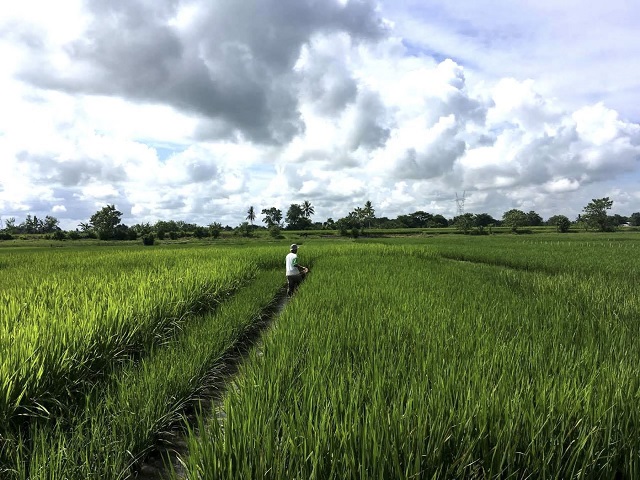
The rice farms of Alex Audencial, 56, in Maligaya, Science City of Muñoz, Nueva Ecija have been producing high palay yields since 2020. This season, he profited P70,000 from his less than a hectare-farm, which he credits to good farming practices that include strict farm monitoring.
“Religiously monitoring the field is very important in rice farming. It is the key to attending to the needs of the rice crops at the right time,” he said.
He said that with close monitoring, spraying of pesticides is only done when needed; preventing excessive pesticide application. As good farm practice, he follows the recommendation of Department of Agriculture-Philippine Rice Research Institute (DA-PhilRice) on pesticide application based on agro-ecosystem analysis.
“Let us also give the right fertilizers in their right amount for the rice crop to yield more, and avoid reducing the amount because harvest will also be reduced. Manage the pests and weeds well,” he said.
To determine the right amount of fertilizers to apply, DA-PhilRice recommends the use of Leaf Color Chart (LCC), Minus-One-Element Technique (MOET), Nutrient-Omission-Plot Technique (NOPT), and Rice Crop Manager (RCM).
LCC is a tool to visually assess the nitrogen status of the rice crop. Moreover, MOET is a pot experiment that is complemented with an ICT-based application to determine the nutrients deficient in the soil and the amounts needed for a certain target yield. NOPT is a means to assess indigenous nutrient supply to serve as basis of fertilizer recommendation, and RCM is an ICT-based platform for rapidly deploying improved nutrient and rice-farming management technologies.
Audencial also planted NSIC Rc 222, which has an average yield of 6.1 t/ha and maximum of 10 t/ha. The variety is moderately resistant to brown plant hopper and green leafhopper.
“It is also important to use high quality seeds, which helps in increasing yield,” he said.
He added that they also practice synchronous planting and fallow period. Rice experts said month-long fallow period or soil rest goes hand-in-hand with synchronous planting. This practice breaks the average life cycle of insect pests that is usually at 30 days, and destroys disease hosts before the next cropping season begins.
With his practices, Tatay Alex harvested 143 cavans from his 0.7-ha farm and sold for P17/kg, profiting P70,000.
“We also harvested 153 cavans from this farm and 188 cavans from our 1-ha rice farm in 2020,” he added.




